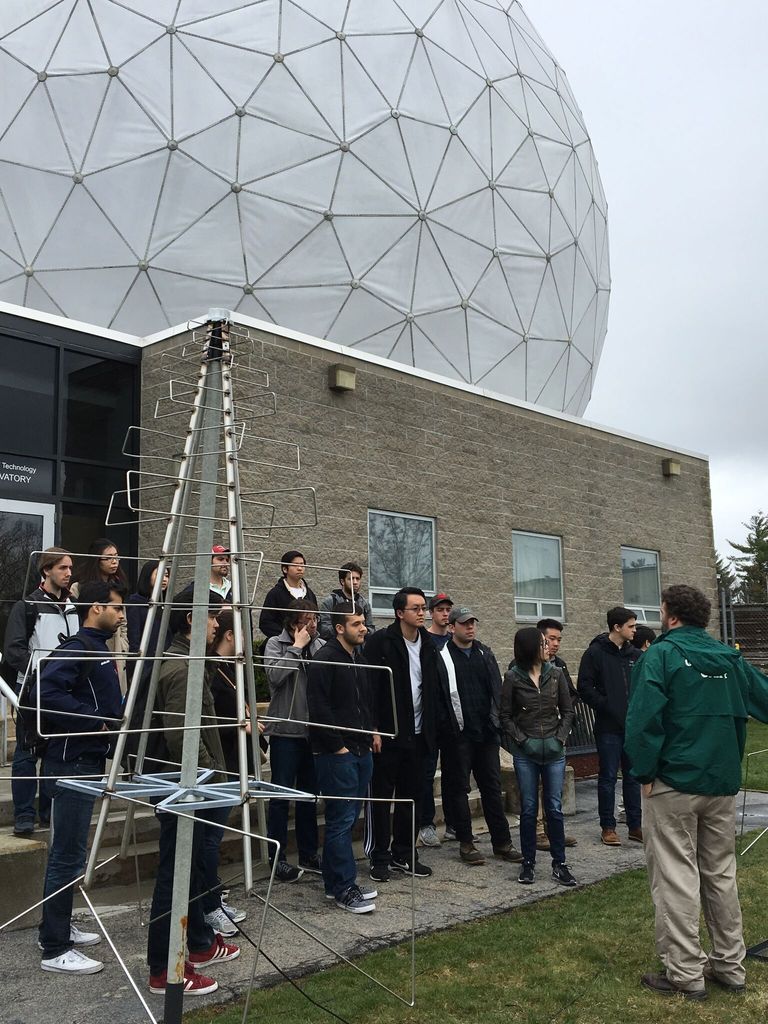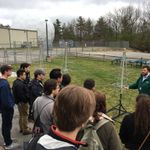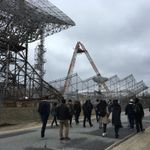Dynamics of Space Vehicles Field Trip to the Haystack Observatory | April 22, 2017
Written by Grace Ware (Junior)
On Saturday I hopped on a bus with a group of students and our professor to make the hour long drive to the MIT Haystack Observatory, where we would see firsthand the equipment used to scan the sky and the space beyond. Once there, Phil Erickson, the assistant director at the site, led us up a quiet road toward the Haystack Observatory. After exiting the bus we were able to see the dome covering the Haystack Radio Telescope, a giant, white, golf-ball like sphere that dominates the sky. We were led into the front building to hear more about the science behind how it and other parts of the facility operate.
Once the overview was over, Erickson took us through winding hallways and into the radome, the giant, white, spherical structure we saw from the parking lot. ‘Radome’ is short for ‘radio dome’, and it is designed to protect the radar equipment from the weather while causing as little interference as possible to the incoming radio waves. This room is a massive sphere 150 feet in diameter in order to house the 120 foot parabolic antenna that is capable of rotating. The dome itself is a spherical frame made up of irregular triangles to allow as many radio wavelengths through as possible, and this radar in particular collects data about the space debris orbiting Earth and can be used for radio astronomy.
We left the dome and started down the road and the Millstone Hill Steerable Antenna (MISA) and the Zenith antenna quickly came into view. Both structures stand over 150 feet tall and left me craning my neck just to see the top. Neither are protected from the elements, however, and Erickson pointed out the rust and patched-up fractures in MISA’s base and the bird’s nest in the leg of the Zenith antenna. He told us the damage was all superficial but that it shows that the equipment here has lasted decades longer than it was ever expected to.
While we walked to our final destination, a small control room, Erickson underscored that the data collected here is crucial to understanding more about the world around us, both within our atmosphere and beyond. As a final demonstration before we left he moved MISA. A few commands to a computer sent the antenna sweeping toward us, a huge metal dish rotating in near silence from where we stood. And, just a minute later, the dish was pointing in our direction, angled to see just over the horizon.


